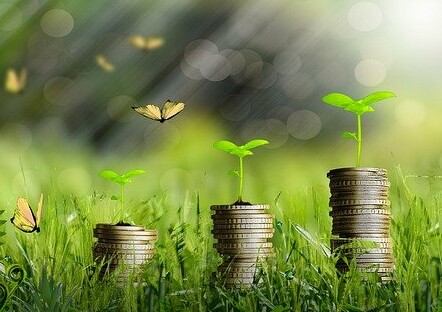The World Meteorological Organization recently released its State of the Climate in Asia, 2020, report; it estimates that extreme weather events – cyclones, floods, and droughts – cost India USD 87 billion in 2020. That should lend more impetus to a green transition. So far, however, this has been slow to emerge. Multiple questions have lingered - how much will the transition cost, who will fund it, what will its profitability be, and why does this constrain the decisions we can or cannot take?
The tardiness is partly the result of mispricing goods and services, by not including their environmental costs. This is made worse by vested interests that continue to deny the science of global warming, and resort to misinformation campaigns and political lobbying to delay change. All of this has huge implications, and must be overcome by steering more capital to accelerate the transition, as Neha Kumar of the Climate Bonds Initiative explains in this interview with journalist Omair Ahmad.
Q. What is a Green Bond?
Basically, all bonds are investment tools. They are a form of debt that a company, a financial institution, municipality, or a state issues, to repay at a future date - with interest - in exchange for money that it can use today to finance its expansion, for example. Green Bonds utilise the advantages of regular bonds like a fixed interest rate, long tenor, tradability, access to a much more diversified pool of investors in the debt capital markets unlike a bank loan. And they add the green as a bonus feature. Which basically means earmarking the capital you raise through a green bond for environmentally sound projects like solar power plant, clean technology investments, or climate adaptation projects.
Earmarking the use of proceeds lends a high degree of transparency. And this is what investors like. For example the Indian Railway Finance Corporation raised USD 500 million to fund electrified passenger and freight rolling stock and other low carbon improvements to Indian Railways infrastructure. When you label, more importantly certify, a bond as green, there are many advantages. Firstly, you get noticed by investors who want to invest in credible green projects. That works well both for investors and issuers. So, for IRFC, it was a win, because the green bond diversified and added to their investor pool.
This is a commonplace story with all green bond issuers. They get oversubscribed by 3 to 4 times and get priced tighter. India tapped the fast-growing international green bond market in 2015 and since then has issued about USD 20 billion worth of green bonds mainly for Renewable Energy projects.
Q. Is there a growing market for green bonds in India?
Yes, definitely. The market has matured dramatically in the last few years. The first green bond was issued in 2015 in India. By 2020 the cumulative investment in green bonds had reached USD 11 billion. In 2021 alone USD 9.67 billion investment was added to this. What we are seeing in 2021 is a mix of other thematic debt instruments too, such as green loans, sustainability linked bonds and ESG bonds etc. These have made quite a splash on the scene globally, especially in the last two years. The core idea is the same – the one pioneered by green bonds – that of earmarked use of funds for green/sustainable/social activities in a measurable way and reporting to back the claim.
 Picture: Neha Kumar
Picture: Neha Kumar
Again, for perspective, this USD 20 billion is only a tiny fraction of what India could attract from global green capital pool to finance its local needs. The investment in green bonds in China, in comparison, is about 10-12 times higher than in India. Again, for perspective, combined labelled global issuance of Green, Social, and Sustainability, Transition, and Sustainability-linked bonds is over USD 765 billion in the first three quarters of 2021, and green bonds are tipped to reach a trillion a year by 2023. This universe is growing very fast even if it is a small fraction of the huge global bond market – an estimated USD 100 trillion.
India is batting much below its potential. Our need is in trillions of dollars for mitigation and adaptation and green finance flow from both Indian and international capital sources is around 17-18 USD billion per annum according to a study by the Climate Policy Initiative. Investments are mainly in the RE sector. While opportunities in sectors like waste, water infrastructure, agriculture exist, but haven't yet been tapped as such.
Q. What are the problems?
I think it comes down to a lack of awareness and the ability to tap these (sustainable finance) opportunities. Plus, the usual deal size for a typical green bond is above USD 300 million for it to make sense to international investors. This is difficult for small scale adaptation projects. And it comes down to definitions. What is needed to classify something as green? The renewable sector is easy, because things like solar and wind are zero emission, pure play green. Utility scale is easier than decentralised RE as it has become a well understood sector as it has matured.
Other areas are less clear. Can we look at what makes green buildings green, and set clear, comparable thresholds? What counts for permissible thresholds for the transport sector? It's globally competitive and tailpipe emission norms will be consistent with EU thresholds of 50gCO2/km soon.
Should we adopt international thresholds where they work? Well, comparability helps in cross border flow of capital. The EU did this work from 2016 to 2021, coming up with a taxonomy or a set of definitions, a format, and thresholds. The EU had announced that it will become net zero by 2050, so they calculated backwards from that in terms of the remaining carbon space they would have and how that would be split across sectors to define if any new investment will qualify. In the end they came to a threshold of 100 grams of CO2 equivalent per KWH as the upper limit for electricity generation. [Actually, the declaration of net zero by developed countries by mid mid-century is a bit of a ruse, because they should be net zero now, and by declaring net zero in the future they are squeezing out the space for developing countries.]
Although EU said that their definitional system – the taxonomy – was technology agnostic, they ruled out coal altogether due to absolutely no contribution to mitigation and rather grave health and other pollution impacts. Other things, like steel or cement, are high emitters, but there is no viable technology yet for green steel, so they proposed an approach for 'hard to abate' sectors and said credible transition would follow best in class approach, showing significant improvement.
There are other countries, nearly 25 of them, developing their own taxonomies, including India. And now that we have also announced net zero by 2070, the question of thresholds will rest on this target year. India's net zero by 2070 will be the basis for deciding the thresholds for us in India. We will need to bring down coal fired electricity drastically for the transition to be really green. Normal emission from coal in India is in the range of 700-800 gCO2/kwh.
People would argue that our net zero (or any net zero) is too long into the future and what matters is what you do now. Investment is needed in this decade by 2030 for our SDG targets, RE targets etc. True. But a net zero year is useful as it helps us chart a trajectory. Let us also acknowledge at the same time that a lot of Indian companies have announced net zero by 2050. And they will go ahead anyway with more aggressive targets for reasons of competitiveness in the international market and attracting investment.
Q. What is India doing?
In August 2020 the Ministry of Finance invited a number of stakeholders, national and international, to be part of a discussion on sustainable finance. There was three-day marathon session to discuss ideas such as taxonomies, disclosures, and regulations. This led to the creation of a Sustainable Finance Task Force in early 2021, with four working groups on taxonomy, regulation, and a sustainable finance roadmap. The results should be out soon. But it is only a start.
Q. Is there an easier way to do this?
Yes, well, I feel on the green stuff there is a lot of heavy lifting done by the EU already, especially on mitigation. Some countries have just copied the EU taxonomy concepts – which is not a bad approach. It keeps things comparable and the concepts make sense. The Chinese came up with a green catalogue (which included “clean coal”) before the EU, but after the EU came out with its guidelines, China is trying to see how much of it is harmonised to that of EU They call it a common ground taxonomy and say it is 80% aligned to EU. Why did they do this? Because so much source of capital – the big investors – are European. Many other countries are doing the same.
But India has another specific challenge, and for that reason alone its attempt will necessarily need to beyond EU's. We are a developing country in transition, and much of our population is poor. We must account for social aspects as well, things like jobs and employment, equitable access, and community empowerment. These are harder to quantify, but they are essential to any green transition by India. Any transition that ignores social aspects is inherently fragile, and will risk damaging both the social and economic stability of the country.
Q. What are the big things in this area that we should be thinking about?
Clear common language. Both international capital and domestic investment is dependent on a common language that it can understand. This is why it is imperative to have that, and secure that. In that language we need to make sure we have what India – as a developing country – needs. Agriculture, for example, employing more than half of Indians, is already reeling under climate change impact. Therefore, adaptation and resilience become central to our efforts and financing this at scale is absolutely the key. It is a tough issue, with difficult definitions and locational aspects.
 |
 |
We need to enable finance. At scale. We need to unclog the channels for big- and small-sized finance to reach sustainable destinations. The industrial world has focused largely on mitigation. We cannot afford to do that, nor can we afford to allow the world to ignore this, thus we must take the lead. By the way, resilient agriculture also has positive knock-on effects on mitigation so it is far too important to be left for later. Similarly, biodiversity conservation. These are challenges and opportunities that India needs to capitalise upon, and do so now.
Lastly, it is worth noting that it took a pandemic for us to acknowledge that mindless environmental degradation could result in massive outbreak of diseases, and bring economies to their knees. So, the recovery needed to be more resilient and sustainable. This was also reflected in a huge surge of thematic sustainable finance instruments during and after the pandemic. Green bonds were among the quickest to recover from an initial squeeze.























